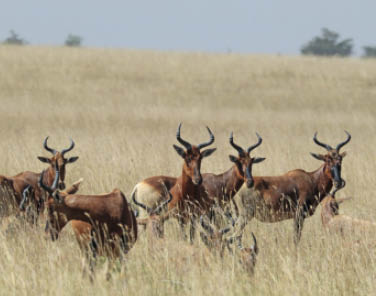Swayne’s hartebeest (Alcelaphus buselaphus swaynei) is an endangered antelope endemic to Ethiopia. Two of the largest remaining populations are located
in the Senkelle Swayne’s Hartebeest Sanctuary (SSHS) and Maze National Park.
SSHS was established by the Ethiopian Wildlife Conservation Authority (EWCA) in 1976 to protect the hartebeest, and is the smallest protected area (54km²) in Ethiopia. The area is surrounded by human settlement on all sides, except to the east, and nearby residents were greatly impacted by the new rules put in place in terms of access to resources and limitations on development. With SSHS’s non-participatory management also impacting the community’s traditional use rights, locals felt abandoned.
After the Derg government was toppled in 1991, people began seeking retribution by hunting every hartebeest they came across, both inside and outside the sanctuary. Between 1991 and 1992, the population fell from an estimated 3,500 animals to less than 70.
The Gada system is the indigenous democratic system of governance used by the Oromo ethnic group in Ethiopia. One of the traditional clan leaders, Aba Gada Worena Jarra Jarso, was particularly worried about the aggressive extermination of Swayne’s hartebeest.
He assembled locals in the nearby town of Senbete and started a conversation about how to preserve the remaining antelope. He urged the neighbourhoods to consider the ramifications of eradicating the species permanently, asking fellow community leaders and elders (known as Aba Gadas):

